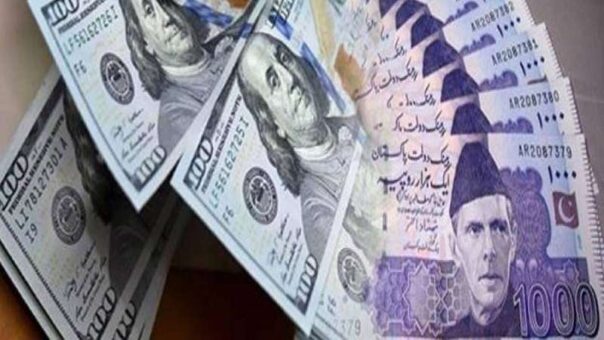The Pakistani Rupee (PKR) experienced its fifth consecutive day of decline against the US dollar on Tuesday, as external debt repayment pressure and political uncertainty continued to weigh on the currency. The interbank foreign exchange market witnessed a decrease of 59 paisas, with the exchange rate closing at PKR 287.15 compared to the previous day’s closing rate of PKR 286.56.
This decline follows the rupee’s previous drop to PKR 284.96 against the dollar on May 16, 2023. The local currency has been under pressure due to limited inflows and an uncertain political climate, reaching a record low of PKR 298.93 on May 11, 2023.
READ MORE: PKR falls by 74 paisas against dollar, closes at PKR 286.56 in interbank
Currency experts attribute the devaluation to increased demand for the dollar at the beginning of the trading week, primarily driven by import and corporate payments. The surge in demand for foreign currency during this period is a common occurrence as businesses fulfill their import obligations. This increased corporate payment activity further contributes to the dollar’s demand, subsequently depreciating the Pakistani Rupee.
In addition to the heightened demand for the dollar, political and economic uncertainties in the country have exacerbated the challenges faced by the Pakistani Rupee. The lack of clarity regarding political dynamics and economic policies has resulted in a loss of investor confidence, negatively impacting the local currency.
READ MORE: Pakistani rupee extends losses against US dollar, ending at PKR 285.82
It is important to consider that exchange rates are influenced by various factors, including supply and demand dynamics, market sentiment, and economic indicators. The current devaluation of the Pakistani Rupee against the dollar reflects the prevailing economic conditions and underscores the need for measures to stabilize the currency.
The State Bank of Pakistan, as the country’s central bank, plays a vital role in managing the exchange rate and implementing policies to promote stability. It is crucial for the government to address economic challenges, attract foreign investment, and improve the overall economic outlook to restore confidence in the local currency.
Market participants will closely monitor exchange rate movements throughout the trading day, assessing their potential impact on various sectors of the economy. Policymakers and financial experts will continue to analyze and formulate strategies to mitigate the factors contributing to volatility in the foreign exchange market.
READ MORE: Pakistani Rupee records 22 paisas decline against dollar on May 18, 2023
While short-term fluctuations are common in the foreign exchange market, sustained stability and long-term growth necessitate addressing underlying economic issues. The commitment of the Pakistani government to implementing prudent economic policies and structural reforms will be key in restoring confidence and strengthening the Pakistani Rupee in the long run.
As the situation evolves, market participants and authorities will vigilantly monitor developments in the currency market, seeking opportunities for stability and growth in the national economy.
